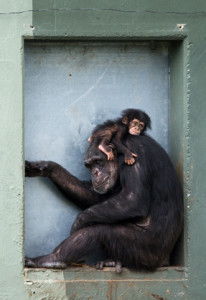 Normal aging entails many physical, biological, chemical, and psychological changes and, like the rest of the body, the brain changes with every passing year. Aging affects the brain size, vasculature, and cognition. Studies have shown that the volume of the brain and its weight decline with age at a rate of around 5% per decade after age 40 and the actual rate of decline increases with age, particularly over age 70.
Normal aging entails many physical, biological, chemical, and psychological changes and, like the rest of the body, the brain changes with every passing year. Aging affects the brain size, vasculature, and cognition. Studies have shown that the volume of the brain and its weight decline with age at a rate of around 5% per decade after age 40 and the actual rate of decline increases with age, particularly over age 70.
Brain changes do not occur to the same extent in all brain regions, in fact the most severe volume loss takes place in those areas involved in memory and executive functions, such as the hippocampus and the frontal lobe.
Nonhuman primates are often used as models to understand the neuro-biological correlates of aging because of their close phylogenetic relationship with humans. In a recent study, Autrey et al. focused on age-related decline in neocortical organization in chimpanzees. They analyzed neuro-anatomical variables such as gray and white matter volumes, cortical thickness and depth and fold opening of cortical sulci in 219 captive chimpanzees classified into 4 groups: adolescent, young adults, middle-aged adults and elderly. All subjects underwent MRI scans and MRI images were skull-stripped, cropped, and reformatted using Analyze software.
Aging effects were found only for cortical gyrification – the folding process which allows for greater surface area of cortical neurons within the same skull volume – and white matter volume. Chimpanzees showed increased gyrification with age and a cubic relationship between age and white matter volume. All in all, the results of the study proved that the macrostructural organization of the chimpanzee brain does not appear to change dramatically with aging.
These findings brought forth the question of why more pronounced pathological and cognitive changes are found in humans compared to nonhumans primates. It has been hypothesized that a possible factor explaining these differences could be increased longevity. The “Grandmother Hypothesis” suggests that human longevity resulted from selection for longer post-menopausal survival in women, who could contribute to the cooperative care of dependent offspring in their families. On the other hand, the lengthy period of brain decline characteristic of human aging might allow the accumulation of more structural changes in the brain and might contribute to our vulnerability to Alzheimer’s disease and other age-related neurodegenerative diseases.
The short post-menopausal period of nonhuman primates allows them to avoid neurodegenerative diseases that are often seen in the later stages of life in humans. Besides differences in post-reproductive lifespan, also differences in lifestyle, diet and exercise may be considered significant factors involved in age-related changes in cognition and cortical organization.
Tags: Aging, Brain Volume, Evolution AnalyzeDirect
AnalyzeDirect